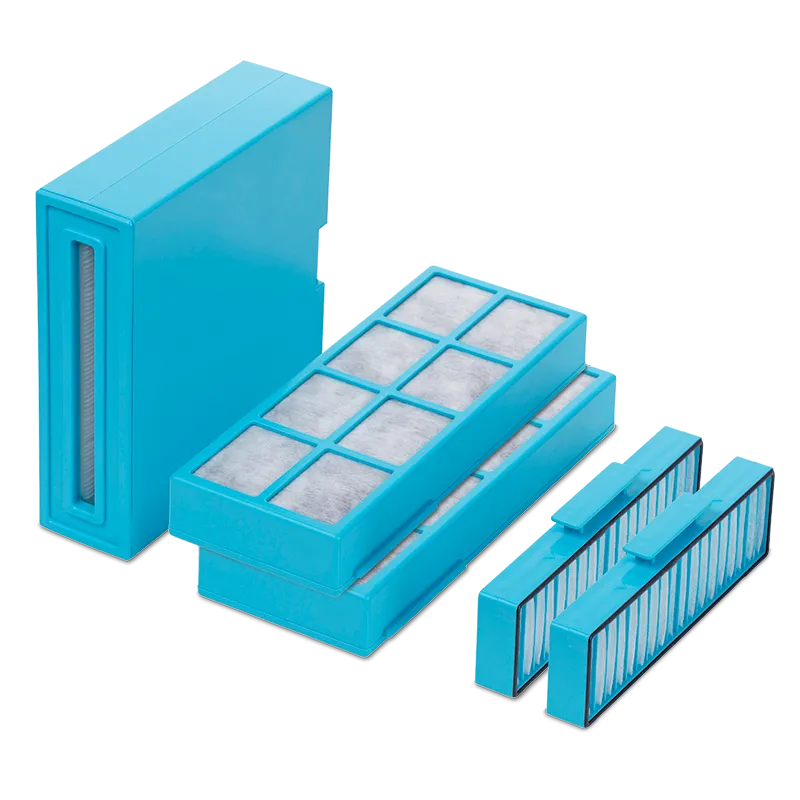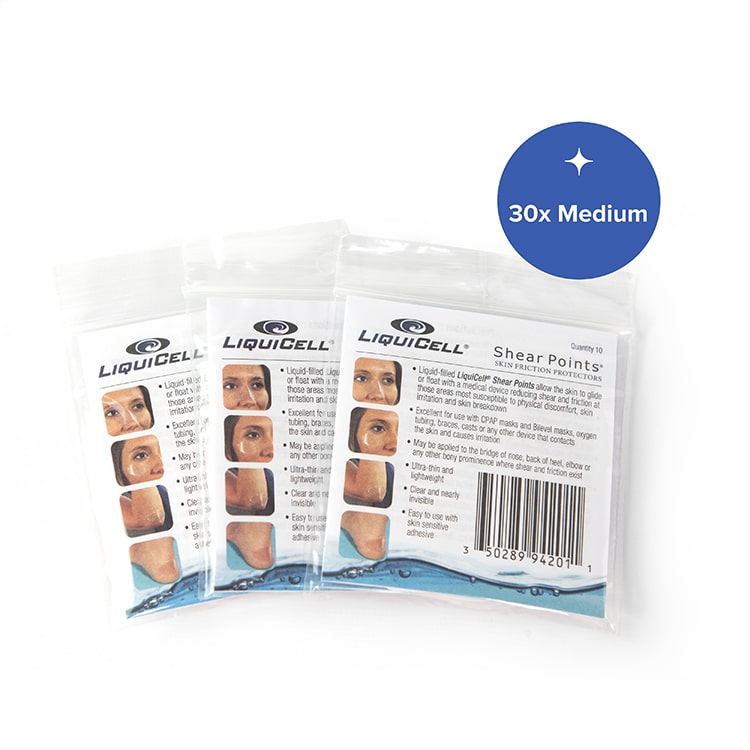Air Quality
Of all the substances we put into our bodies, by far the most common thing we consume is air. Unlike eating and drinking, we breathe without thinking. Every four to five seconds we take a breath, drawing a cup of air, dust, pollen, and mold spores into our lungs.1
The air we breathe is consumed constantly, and we have little choice in whether we take a breath or not. Making sure that the air around us is clean and of high quality is important for our health.
SoClean 3-Stage Air Purifier+
Improving air quality
The only way to choose what we breathe is by changing the environment we occupy or by cleaning the air around us. Environmental laws that reduce the sources of pollution or require mitigating measures have a proven track record for improving air quality.2
Laws and regulations are effective at improving air quality in the long term. There are also immediate steps that can be taken to improve air quality in the local environment. An air purifier can improve the air quality of a room, home, or office. A High Efficiency Particulate Air filter, or HEPA filter, will significantly reduce the amount of particulate matter in the air. A HEPA air purifier works by trapping small particles in the air in a filter medium.
Some air filtration systems include an activated carbon filter that reduce the amount of volatile organic compounds in the air. VOCs such as benzene are known carcinogens, so air filtering that includes a method for reducing VOCs can be beneficial to human health.3
SoClean 3-Stage Air Purifier+
Shop NowImpurities in the air
Pure air is mostly gaseous nitrogen and oxygen in a four to one ratio, with a tiny sliver of argon, carbon dioxide, water vapor, and other gases. Air that consists only of a mixture of gases really only exists in a laboratory environment.4
In the real world, there are always small particles of solid material floating in the air. The particulate matter may be natural in origin, such as pollen, mold spores, or miniscule pieces of minerals and soil. The particulates may also be artificial, such as soot from power plants, factories, and vehicle exhaust. Other artificial sources of particulate matter include dust and particulates produced from construction or manufacturing.
In addition to these particles, there are gases introduced to the atmosphere by human activities that are considered impurities. Oxides such as sulfur dioxide and nitric oxide, which can cause acid rain, and nitrogen dioxide, which can lead to asthma and chronic obstructive pulmonary disease, are created as combustion products by vehicles and power plants.5 Industrial processes and consumer products that contain volatile organic compounds, or VOCs, also contribute to the gaseous impurities in the atmosphere. Paints, furniture foams, and cleaning supplies can release volatile organic compounds into the local atmosphere.6
More Products from SoClean
SoClean Air Purifier+ Filter Kit
$149
Portable Outlet CPAP Backup Battery V2
Save $50!
New and improved model - when the power goes out, your CPAP stays on!
Just plug the new Portable Outlet UPS between your CPAP equipment and your bedside wall socket to protect from loss of power due to storms or outages.
$349
LiquiCell Shear Points, 30 Skin Friction Protectors, Medium
Great for use anywhere skin would benefit from cushioning and protection. Ultra-thin, liquid-filled strips protect skin and stay in place.
FSA/HSA eligible LiquiCell Shear Points are latex-free, ultrathin, clear liquid-filled membranes that provide a synthetic, external cushion. It reduces painful friction by allowing an object to glide or float over the skin. Gentle skin adhesive keeps LiquiCell Shear Points securely in place overnight, while allowing easy and painless removal in the morning.
Medium, 30 per box, each 2.75" wide by 1.3" high
Also available: Small (30 per box, each 2.2" wide by 1.1" high) LiquiCell Shear Points are excellent for use on the bridge of the nose to reduce irritation from sleep equipment such as face masks.
$19.95
Poor air quality has been linked with many negative health effects. Higher levels particulate matter in the air has been found to increase the risk of dying of diseases of the lungs, such as lung cancer and chronic obstructive pulmonary disease, as well as acute lower respiratory infections7. In addition to pulmonary distress, high particulate matter in the air increases the risk of ischemic heart disease, where blood flow to the heart is limited.8
Poor air quality has also been linked to a variety of negative health effects for children9. Higher incidence of asthma hospitalization, as well as lower school test scores are some of the effects poor air quality has on children.
FAQs
Reductions in air pollution has changed some of the considerations about whether the air quality is better indoors or outdoors. Newer construction is often more airtight than older buildings, and synthetic materials used in producing these buildings can release volatile organic compounds over time. Whether air quality is better indoors or outdoors depends on the building or home as well as the surrounding environment.
The United States Environmental Protection Agency publishes an Air Quality Index.10 The Air Quality Index is based on measurements of gaseous pollutants and particulate matter. The Environmental Protection Agency offers an easy-to-use website where you can find current and past air quality information based on your location.
An air purifier that includes a HEPA filter will significantly reduce particulate matter indoors. Running a HEPA air purifier can improve air quality by removing pathogens and allergens from the air.
In order to remove gaseous pollutants such as volatile organic compounds and sulfur dioxide, a filter with activated carbon can be used. Unlike a HEPA filter, which simply catches physical materials passing through the filter, activated carbon filters chemically trap the VOCs and other pollutants.
HEPA filters have been shown to efficiently remove bacteria and mold from the air. The average size of a bacterial cell is around 1–3 micrometers long and is easily stopped by HEPA filter material.11 Mold spores are even bigger, ranging from four to twenty micrometers.12
Why SoClean
Keep your home fresh and SoClean with the SoClean 3-Stage Air Purifier+. Up to 3,000 times more efficient than HEPA standards, the SoClean Air Purifier+ captures particles down to 10 nanometers and generates cleanroom-level clean air for your home. The easy-to-use design makes it simple to produce quality air wherever you are.
Other Sources:
https://journals.plos.org/plospathogens/article?id=10.1371/journal.ppat.1002086
https://www.sciencedirect.com/science/article/abs/pii/S0048969701007653
Sources:
- https://www.lung.ca/lung-health/lung-info/breathing#:~:text=We%20breathe%20in%20and%20out,our%20body's%20life%2Dsustaining%20gas
- https://www.smu.edu.sg/sites/default/files/economics/shea2014/presentation/pollution_talk_april_2014_ham2.pdf
- https://www.epa.gov/sites/production/files/2018-07/documents/guide_to_air_cleaners_in_the_home_2nd_edition.pdf
- https://www.nationalgeographic.org/encyclopedia/air/
- https://www.smu.edu.sg/sites/default/files/economics/shea2014/presentation/pollution_talk_april_2014_ham2.pdf
- https://www.epa.gov/indoor-air-quality-iaq/volatile-organic-compounds-impact-indoor-air-quality
- https://pubs.acs.org/doi/abs/10.1021/acs.est.5b01236
- https://www.health.ny.gov/environmental/indoors/air/pmq_a.htm#:~:text=Exposure%20to%20fine%20particles%20can,as%20asthma%20and%20heart%20disease
- https://www.smu.edu.sg/sites/default/files/economics/shea2014/presentation/pollution_talk_april_2014_ham2.pdf
- https://www.airnow.gov/aqi/aqi-basics/
- https://www.ncbi.nlm.nih.gov/pmc/articles/PMC4484965/
- https://aem.asm.org/content/82/8/2479










